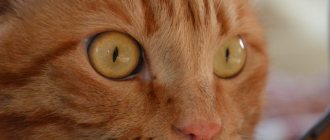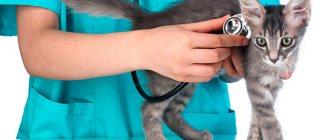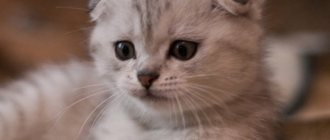8302Administration
1
A person needs to take care of someone. It is easiest to show compassion for our smaller brothers. This is why people so often get cats. Having appeared in the house once, they become objects of adoration for all household members for a long time. Love and affection are great, but no one is immune from problems. At one point you may wonder: what to do if the cat hasn’t written for a day? Every owner is attentive to his pet, and therefore he will probably notice his problems with the toilet. The most important thing is to act competently and with a cool mind, and then the problem will be solved easily, even if the cat has not peed for more than a day.
What can you do urgently before visiting a veterinarian?
If it is not possible to quickly deliver the animal to a veterinarian, first aid should be provided by the cat's owners at home.
First aid is as follows: a warm compress or heating pad is placed on the stomach and perineal area. The heating pad and compress should be warm, but not hot! You can place the animal in a bath of warm water, making sure that the water does not reach the heart area.
It is forbidden to massage the cat's belly - this can cause serious complications.
Make sure that the cat drinks enough, and if he refuses to drink, force the animal to drink clean water from a pipette. Add some chicken broth to your regular food to increase your fluid intake. Play with your pet a little - this activates the work of all body systems. You need to play carefully so that the animal does not become overtired.
What to do?
Choosing the right algorithm of action if the cat did not write much the day before is not so difficult.
© shutterstock
Self-treatment
First, you need to remember everything that happened to her in recent days. Perhaps you transported your pet from one place of residence to another? Probably the cause of all the troubles is increased nervous tension. In this situation, you should ensure that your cat is as comfortable as possible. If the tray has been dry for the second day, and the cat periodically comes up and sadly paws at the litter, it may not be entirely comfortable for him in his own toilet. The fact is that if proud cats don’t like something, they will endure it on principle. Perhaps the tray has not been cleaned for a long time or there is not enough filler in it.
Try tidying up or adding pellets to the toilet. Also check to see if your cat is thirsty. Has the water decreased since the last time you filled the bowl? If not, you should force the cat to drink.
Urgent medical care
First aid in a veterinary clinic involves inserting a catheter. Only a professional should insert a catheter, after first flushing the bladder with antiseptics. This operation is painful, so it is performed under general anesthesia. After catheterization, the veterinarian performs a series of tests to find the cause of urinary retention.
Important: you should not insert a catheter often - after this procedure, swelling of the urinary tract occurs. If the doctor sewed in a catheter for several days, you need to keep the cat in a special collar during this time so that it does not injure itself and does not remove the catheter.
Normal frequency of urination in cats
Kids go to the litter box several times a day, adult cats once, males - 1-2. There is no need to worry about going to the toilet more than twice as long as your pets are feeling well. It’s not a problem when cats double the number of trips during estrus, and neuters are emptied 6 times a day.
It is worse when there is urinary retention. If no traces of urine are found on the tray for more than two days, then the cat has anuria - a terrible symptom that can lead to overflow and rupture of the bladder and the death of the animal.
Diseases that cause prolonged urinary retention
If a cat cannot pee for more than two days, this may be symptoms of the following diseases:
- Cystitis is an inflammation of the mucous membrane of the bladder. The disease occurs due to infection entering the bladder or due to mechanical damage to the mucous membrane. Animals of all breeds and ages are prone to cystitis. Due to their anatomical features, cats get sick more often than cats. The presence of the disease is indicated by the fact that the cat does not go to the toilet very well - after the cat attempts to empty the bladder, small drops of urine are released. It hurts the cat to urinate, he screams heart-rendingly, rubbing against the walls of the tray. Over time, fear of pain makes the cat completely refuse to visit the litter box. In such cases, you should not postpone a visit to the veterinarian.
- Urethritis is an inflammation of the mucous membrane of the urethra. The disease usually develops against the background of cystitis. Neutered cats are most often susceptible to urethritis. If a castrated cat cannot pee, and after prolonged pushing, only droplets of urine appear in the tray, in which blood can be seen, then the animal urgently needs to be shown to a doctor.
- Urolithiasis (urolithiasis) is a pathology in which sand crystals and urinary stones form in the urinary tract and in the bladder itself. Sand and stones pass through the ureter, irritate and injure the mucous membrane, causing inflammation - the cat cannot go to the toilet without pain, and blood appears in the urine. In severe cases, the patency of the urinary tract is completely disrupted. Urolithiasis is a disease that requires urgent treatment. Only urgent surgery can solve the problem and save the pet’s life.
- Kidney diseases. The list of congenital and acquired diseases of this organ is long - cats are prone to kidney disease. Poor kidney function leads to irregular urination. A veterinary specialist should carry out diagnostics and determine a treatment regimen based on the test results.
- Dysfunction of the sphincter and bladder walls. The disease develops in older cats as a result of disruption of the central nervous system. Usually manifests itself as incontinence - old cats urinate on themselves. In some cases, poor urine output develops. The diagnosis can be made by a veterinarian.
- Urethral and bladder polyps are benign growths that resemble warts. They can block the urinary tract and interfere with the flow of urine. For diagnosis, it is necessary to conduct a number of studies (X-ray, ultrasound). The disease is treated surgically.
- Traumatic injury to the urinary tract. It is urgent to take your cat to the veterinarian if he has fallen from a height or been in a car accident.
- Congenital pathologies. Urinary retention may be associated with the development of the cat’s internal organs. In such cases, problems with urination appear at a fairly early age. Their timely and accurate identification is necessary.
Causes and symptoms
It is quite difficult to calculate uniform norms for urination in a cat. This parameter depends on a variety of factors. Doctors can only give an average figure: a cat needs to go to the litter box 2-3 times a day. If the cat peed only once a day, you should pay extra attention. The fact is that animal urine is quite toxic, and, accumulating in the body, it can cause urolithiasis.
So why hasn't the cat written for a day (or more)? There can be many reasons. Pets may experience such problems due to the following conditions:
:
- recent stress;
- problems of the urethra;
- kidney diseases;
- insufficient fluid intake;
- exhaustion of the body;
- an untidy tray or unsuitable filler, and so on.
Also, a disease in which the cat pees little is accompanied by some symptoms. Lack of urination for more than a day may occur in parallel with the following symptoms
:
- weakness and changes in the cat’s behavior;
- increased or decreased interest in liquids and food;
- increased irritability and so on.
As you can see, there can be many reasons and symptoms: from reluctance to drink to serious organ diseases. What should I do?
The cat cannot go to the toilet - alarming symptoms
Untimely outflow of urine can provoke life-threatening conditions for the cat. In stagnant urine, pathogenic bacteria multiply rapidly. The bladder may not be able to withstand the strain. General intoxication of the body is no less dangerous for the health and life of the pet.
Therefore, it is so important to learn how to identify the first symptoms of painful and difficult urination. The following signs of trouble should alert the owner:
- the cat sits in the tray for a long time, spins around, chooses a pose, but in the end the tray is dry;
- the animal screams while trying to urinate;
- cats constantly lick the urethral area and meow pitifully;
- traces of blood, pus, and white flakes are visible in the urine;
- a sudden change in the color or odor of urine;
- urination disorders are accompanied by fever, lethargy, drowsiness, refusal to drink or severe thirst;
- the animal refuses to play, becomes aggressive, restless;
- the abdominal wall becomes painful and tense;
- cats meow and scratch when you try to pick them up.
If one or more symptoms appear, it is necessary to show the animal to a specialist for diagnosis and treatment.
Self-diagnosis
How often do kittens go to the toilet: how many times a day?
Only a doctor can diagnose a cat. But you can check for simple symptoms. Among them:
- bloating, abdominal cavity is hard and elastic;
- when trying to touch the belly, the cat will behave nervously or aggressively;
- the cat spins around in the tray, looks for a place, takes a long time to choose a position, but in the end the tray is dry;
- the animal does not sleep on its stomach or cannot sleep at all.
The presence of any of the symptoms should be a reason to visit the veterinarian. You should not try to help him with folk remedies or medications without confidence in the diagnosis, this can lead to disastrous consequences.
Treatment options
The article is based on the expert opinion of the head physician of the veterinary clinic Averiya Telnova I.Yu.
A little higher, we looked at ways to help a cat go to the toilet to pee - we were talking exclusively about first aid. Self-medicating in such cases means putting your pet’s life in danger.
The decision on the choice of treatment method must be made by a veterinarian. In some cases, only urgent surgery can save a cat’s life, so it is so important not to delay a visit to the doctor.
The treatment regimen is prescribed by a veterinarian taking into account the medical history and final diagnosis.
Depending on the nature of the disease, antibacterial, anti-inflammatory, antiviral, diuretic, painkillers, antihistamines and hormonal drugs are prescribed.
All that is required of the owner is to strictly follow all medical instructions, provide the animal with comfortable living conditions, maintain a drinking regime and adhere to the diet recommended by the doctor.
Special diet
Regardless of the diagnosis, a sick cat will need a corrective diet. It is necessary to exclude from the animal’s diet foods that irritate the kidneys and organs of the urinary system.
Cheap dry food of the “economy” and “premium” classes is prohibited. These products contain a lot of salt, preservatives, flavors and dyes. Of the expensive dry food, only special brands designed for animals with urological diseases and urolithiasis are allowed.
Foods that should not be given to sick cats:
- Pork is a fatty meat that thickens urine.
- Milk is a source of magnesium, which obstructs the flow of urine.
- Salt.
- Raw fish contains phosphorus. May cause the formation of stones in the bladder.
- Raw meat. Protein foods overload the kidneys.
Until the animal’s condition stabilizes, the cat’s diet should be light, high-calorie and natural. It is imperative to ensure compliance with the drinking regime - the cat should always have a sufficient amount of fresh drinking water.
When does a cat need a urine test?
As a rule, a urine test is not prescribed for no reason and aims to discover the cause of painful changes in the pet’s behavior. Such changes are somehow related to bladder emptying:
- The cat often visits the litter box, but his visits remain fruitless.
This may indicate a blockage of the urinary tract or kidney failure and requires prompt medical intervention. A cat's unsuccessful visits to the litter box are a cause for serious concern. - The cat meows loudly while emptying its bladder. This symptom indicates possible inflammation of the kidneys, urethra, etc...
- The cat's urine has changed color and contains pus or blood. Normally, the color of cat urine should be light yellow; if it changes to deep amber, you should be concerned about the health of the animal. Blood in the urine, in turn, is a possible sign of stone damage to the urinary canal.
- The cat's urine began to smell sharp.
In a healthy cat, urine does not have a pronounced odor; its presence may be a consequence of the proliferation of bacteria in the animal’s genitourinary system. The repulsive smell of your pet's urine indicates a change in its composition - The cat began to ignore the litter box and now relieves himself in places that were previously unusual for him. The reason for this behavior is sometimes not harm, which is the first thing that comes to mind, but the inability to control urges due to incontinence.
Prevention of diseases associated with difficulty urinating
Problems with urination appear especially often in castrated, neutered, elderly, weakened animals and in obese cats.
Preventive measures should include:
- regular examination by a veterinarian and strict compliance with all instructions issued by the doctor;
- control of the animal's weight. Obesity causes a malfunction in many body systems, primarily the excretory system;
- compliance with a corrective diet;
- monitoring compliance with the drinking regime;
- preventing animal hypothermia;
- complete rejection of salt in cat food and other salty foods: smoked meats, sausage, salted meat and fish.
Attentive attitude towards your pet will allow loving owners to promptly identify and eliminate problems associated with urinary retention.











